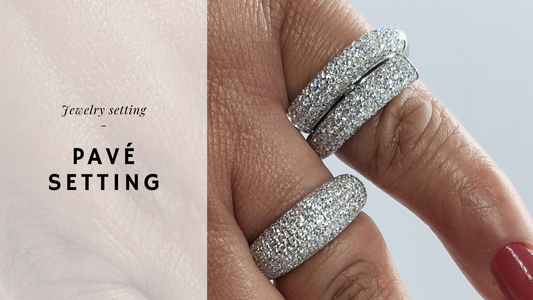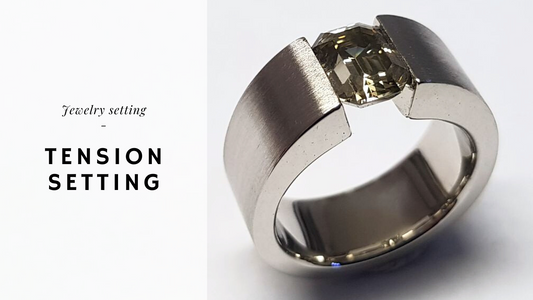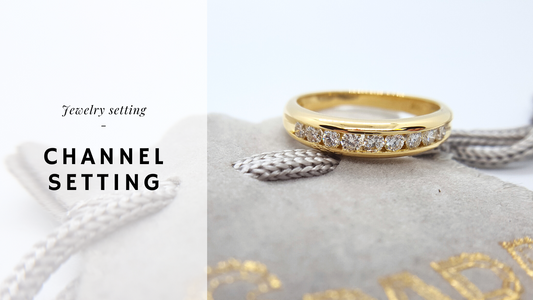
Most jewelry is crafted from individual components. The pieces are often created on the jeweler's bench and then skillfully joined together. The components needed in most types of jewelry are incredibly simple.
Even the most expensive "Tiffany-style" diamond ring features just three pieces - the band of the ring, the gallery that mounts the gem, and finally, the gem itself.
With a few peripheral components, such as earring posts, chains, and hinges (often known as findings), these basic components are used to make everything from solitaire and gem-set rings to earrings, necklaces, pendants and more complex pieces. While the prong setting is the most frequently seen method of setting gems and diamonds, many other styles exist.
Prong setting
Also known as claw setting this style employs small metal posts, called prongs, to secure a gemstone in place. Before setting, each prong must be modified. This process is known as seating. A small groove or notch is cut into the upper portion of each prong. This is where the girdle of the gemstone will reside. The top of the prongs above the notch become the tips, which are bent over the girdle and press against the crown facets. The tips are responsible fore securely holding the gemstone in place.

Four- and six-prong settings are very popular for round and oval gems. The latter style is also known as Tiffany setting because it was originally developed by the founder of Tiffany & Co, in 1886. Some gem shapes may be set in specialized "v-shaped" posts known as chevron prongs. These do a good job of protecting the thin tips of the stones. Chevron prongs are often used on marquise and triangular-shaped gems. Some shapes, such as pears and hearts, may use both standard and chevron prongs.
Another aspect of prongs is the style of the tip. Tips may be fashioned into various shapes. Rounded, oval and pointed tips are more common, but other possibilities exist. Sometimes tips are even formed into ornamental shapes, such as clovers or tridents. These highly-specialized styles are called enhanced prongs.

As all gemstones are suitable for prong setting, it is the most frequently-used method for jewelry. Prongs also offer greater flexibility when making adjustments for the size of an individual gemstone. Understandably, the more prongs, the more secure your gemstone will be. Generally smaller gems use four prongs to allow more access for light.
Prong setting is especially popular for solitaire engagement and bridal rings. Since the center stone is positioned higher, it is more prominent and easily seen. The height of the stone also provides greater access to light, allowing a gem to shine more brilliantly than other styles of setting.



